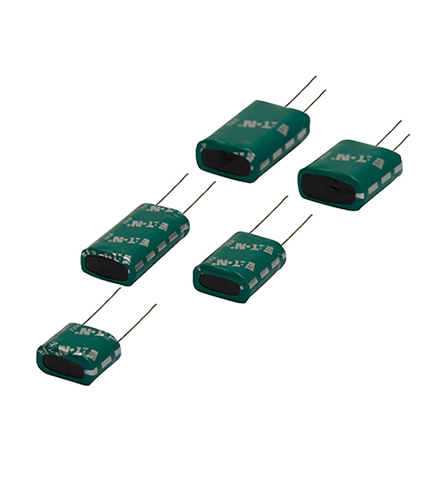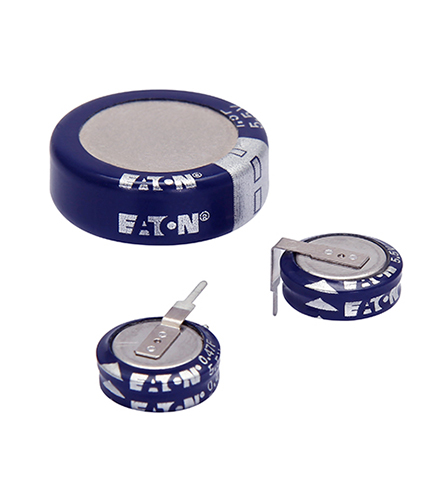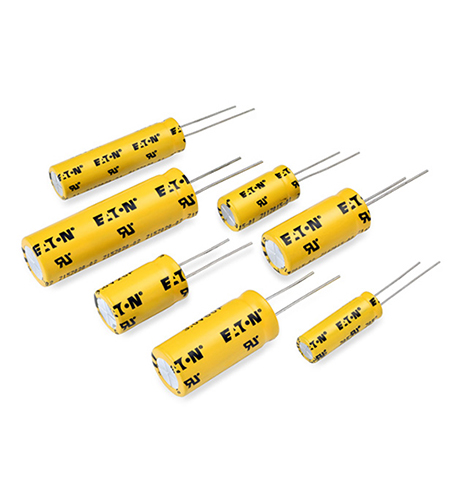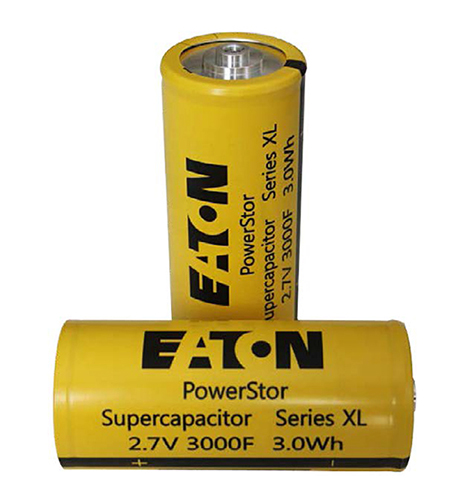
Dans le monde dynamique de l'électronique automobile, ACPNUMEN se distingue en tant que fournisseur de confiance de condensateurs haute performance. Nos produits garantissent non seulement une fonctionnalité optimale dans les systèmes électriques complexes des véhicules, mais contribuent également à l'avancement des solutions automobiles intelligentes. En tirant parti des dernières technologies, les condensateurs ACPNUMEN améliorent les caractéristiques de sécurité, les systèmes de divertissement et la gestion de l'énergie, offrant ainsi une expérience de conduite supérieure aux consommateurs.
Au-delà du secteur automobile, les condensateurs ACPNUMEN trouvent leur créneau dans les systèmes de contrôle industriel, où ils facilitent un fonctionnement fluide et un contrôle précis. Ils sont des composants essentiels dans des applications allant de l'automatisation de la fabrication à la distribution d'énergie, garantissant durabilité et performance constante. En témoignage de notre engagement envers l'excellence, ACPNUMEN continue de repousser les limites de la technologie des condensateurs, soutenant les exigences des circuits numériques des entreprises leaders dans divers secteurs.

En ce qui concerne les condensateurs, ACPNUMEN est devenue une marque populaire et de confiance sur le marché des composants électroniques. Nous avons conçu des condensateurs de haute qualité pour les communications, les équipements de télécommunications, l'électronique automobile, le contrôle industriel et les applications de circuits numériques. L'accent mis sur la qualité et la fiabilité des condensateurs ACPNUMEN en a fait le choix préféré des ingénieurs du monde entier.
Chez ACPNUMEN, nous sommes fiers d'avoir une large gamme de condensateurs qui peuvent répondre aux différents besoins de l'industrie. Nos condensateurs sont conçus pour assurer une communication efficace, notamment grâce à leur capacité à fonctionner de façon exemplaire. Pour le filtrage à haute fréquence ou l'accouplement de signaux, ces solutions offrent des solutions solides qui améliorent l'efficacité globale du système. Grâce à notre stricte adhésion aux procédures d'assurance qualité, nous avons une garantie efficace que chaque condensateur fabriqué répond aux normes les plus élevées possibles puisque cela fait d'ACPNUMEN l'un des noms les plus fiables de l'industrie électronique.

ACPNUMEN se distingue parmi les fabricants de condensateurs de haute qualité dans les domaines rapides de la communication et des systèmes de contrôle industriel. Ces dispositifs sont fabriqués avec la plus grande précision pour éviter toute déviation même dans des conditions difficiles. Les condensateurs ACPNUMEN jouent un rôle majeur dans ce domaine grâce à leur concentration sur l'amélioration de l'efficacité opérationnelle et de la fiabilité pour les équipements de communication, de télécommunication, l'électronique automobile et les circuits numériques.
Cependant, il ne peut y avoir de compromis sur la qualité des condensateurs utilisés dans les équipements de communication et de télécommunication. Pour les condensateurs ACPNUMEN, ils sont conçus pour garantir une transmission de signal stable, un faible courant de fuite ainsi qu'une haute rétention de capacité afin que les utilisateurs bénéficient de connexions fluides et obtiennent les meilleures performances. Ils offrent des performances constantes dans différentes conditions de fonctionnement, que ce soit un smartphone avancé ou une infrastructure de télécommunications complexe.
En revanche, lorsqu'il s'agit d'électronique automobile ou de contrôle industriel, les condensateurs ACP NUMEN sont conçus pour être fiables et durables afin de résister à des conditions aussi difficiles que celles que l'on trouve sur les chaînes de production. Nos produits ont été développés pour répondre à des températures extrêmes, des vibrations et des fluctuations de tension comme l'exigent les normes industrielles. Cela réduira les temps d'arrêt résultant d'une augmentation des niveaux d'efficacité ainsi qu'une sécurité accrue qui affectera positivement la productivité si les fabricants choisissent ces condensateurs particuliers.

De nombreuses industries nécessitent des condensateurs de haute qualité ; c'est là qu'ACPNUMEN entre en jeu. Notre priorité est de garantir que nous offrons des solutions de condensateurs personnalisées pour les marchés de la communication, des équipements de télécommunication, de l'électronique automobile, du contrôle industriel et des circuits numériques. Au fil des ans, l'entreprise a construit une réputation de fournisseur fiable de condensateurs grâce à une vaste expérience dans l'industrie.
Les condensateurs ACPNUMEN sont conçus pour offrir des performances supérieures tout en maintenant une qualité constante. Nous comprenons que pour votre application spécifique, vous avez besoin du bon type de condensateur, c'est pourquoi notre équipe dédiée collabore étroitement avec les clients afin qu'ils puissent élaborer des réponses personnalisées. Nous nous efforçons de fournir à nos clients des produits capables de résister à des conditions de fonctionnement difficiles. Cet engagement envers la perfection nous a aidés à gagner la confiance de nos clients qui reviennent toujours pour en avoir plus.

Les condensateurs sont indispensables à diverses industries, telles que la communication, les équipements de télécommunication, l'électronique automobile, le contrôle industriel et les circuits numériques dans le monde technologique en rapide évolution. Actuellement, ACPNUMEN est en tête parmi les entreprises fournissant des condensateurs de haute qualité capables de répondre aux divers besoins des clients dans ces domaines.
En tant que marque reconnue dans ce domaine d'activité, nous sommes conscients de l'importance de fabriquer des condensateurs qui seront fiables, efficaces et durables en utilisant une technologie progressive. Nous restons constamment à la pointe des inventions les plus récentes et les mettons en œuvre dans nos produits. Ainsi, nous offrons des condensateurs qui ont des performances exceptionnelles pour permettre à tout client de réaliser ses objectifs efficacement.
ACPNUMEN a plusieurs caractéristiques uniques qui le distinguent de ses concurrents, mais la qualité en fait partie. Pour fabriquer nos condensateurs, nous n'employons que des matières premières de première classe, ce qui leur permet de fonctionner dans les conditions les plus difficiles possibles. De plus, chaque condensateur est soumis à un processus de test rigoureux qui implique des processus de vérification effectués pour garantir la conformité aux normes de qualité établies. Notre objectif ultime est d'assurer des relations à long terme avec des clients qui comptent sur nous pour des condensateurs de bonne qualité.

ACPNUMEN Fondé en 1998, le groupe est un fournisseur de services complet axé sur les produits électroniques de puissance. Il a signé un accord d'agence de coopération avec Eaton Bussmann, l'une des entreprises du Fortune 500 aux États-Unis ! Actuellement, l'entreprise se concentre sur la communication, les équipements de télécommunication, l'électronique automobile, le contrôle industriel, les circuits numériques et d'autres domaines. Depuis sa création, nous avons toujours cru que : La qualité est la base de la survie de l'entreprise, la réputation permet le développement continu, l'innovation rend l'entreprise brillante.
Nous avons obtenu de nombreux droits d'agence de marques célèbres, telles qu'Eaton Bussmann, On-Bright, Littelfuse, Conquer, Sino fuse, Allen-Bradley, Aupo, Wago, Sanyou et autres.
Nous avons 26 ans d'expérience dans la protection des circuits.
service 24 heures sur 24, réponse rapide dans un délai de 2 heures.
produits de marque originaux à 100 %, garantie de qualité à 100 %, certifications complètes.
Un condensateur électronique est un composant électronique qui stocke et libère de l'énergie électrique. Il est utilisé dans divers circuits électroniques pour stabiliser la tension, filtrer le bruit et stocker temporairement de l'énergie.
Les condensateurs électroniques sont largement utilisés dans des industries telles que la communication, les équipements de télécommunication, l'électronique automobile, le contrôle industriel et les circuits numériques. Ils sont employés dans des dispositifs et circuits électroniques dans ces domaines.
Les condensateurs électroniques peuvent être utilisés pour la régulation de la tension dans une certaine mesure. Ils peuvent aider à stabiliser les niveaux de tension en lissant les fluctuations et en réduisant le bruit dans les circuits électroniques. Cependant, des dispositifs de régulation de tension dédiés peuvent être nécessaires pour une régulation précise.
Oui, les condensateurs électroniques peuvent être utilisés pour le stockage temporaire d'énergie dans des circuits électroniques. Ils peuvent stocker de l'énergie et la libérer rapidement lorsque cela est nécessaire, mais leur capacité de stockage d'énergie est généralement plus petite par rapport aux dispositifs de stockage d'énergie dédiés.


2024 © Shanghai King-Tech Electronic Co., Ltd. Politique de confidentialité